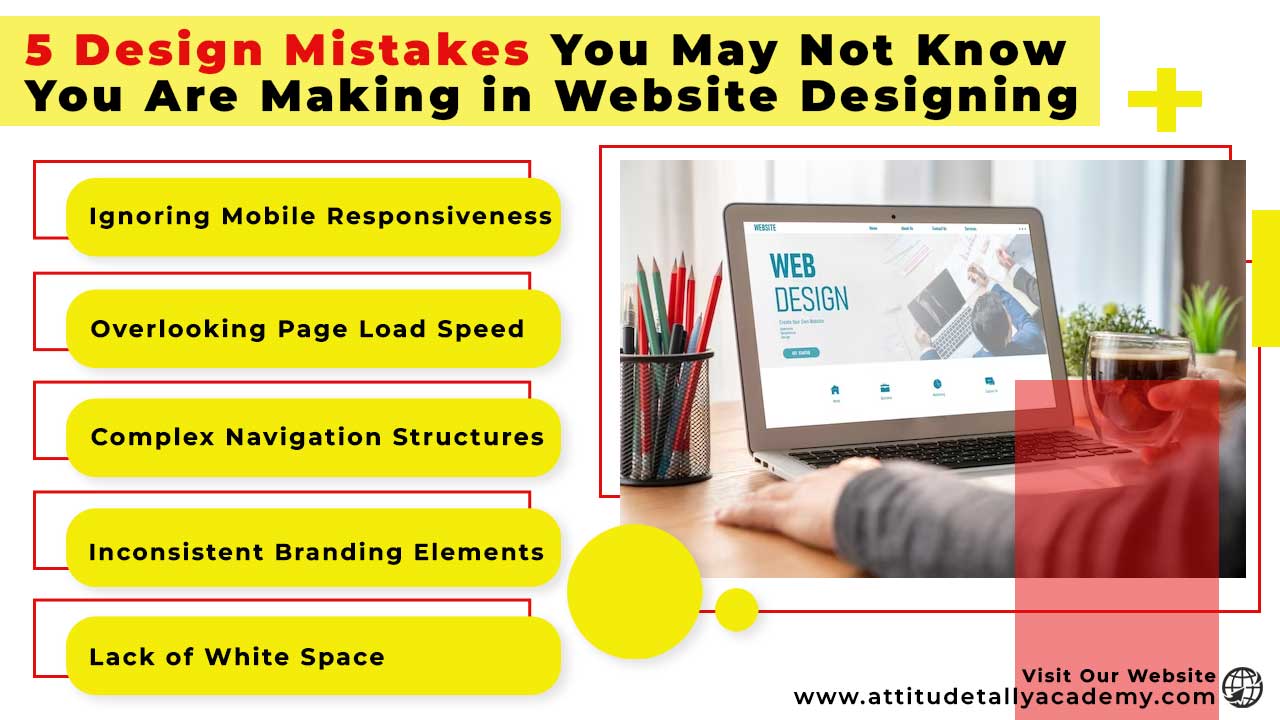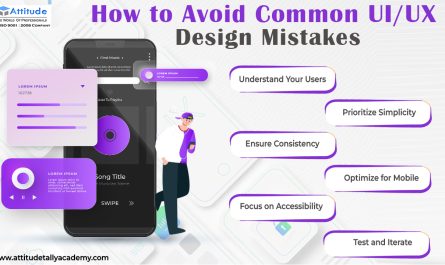Introduction:
In the dynamic world of web design, creating an aesthetically pleasing and user-friendly website is crucial for success. However, even experienced designers can unintentionally make mistakes that affect the overall user experience. In this blog, we’ll explore five common design mistakes that you may not be aware of but could be impacting your website’s effectiveness.
Ignoring Mobile Responsiveness: With the increasing use of smartphones and tablets, ensuring your website is mobile-friendly is non-negotiable. A significant mistake is designing solely for desktop without considering how the layout adapts to different screen sizes. Google prioritizes mobile-friendly sites in search results, making mobile responsiveness not just a user experience issue but an SEO concern too.
Overlooking Page Load Speed: In our fast-paced digital age, users expect websites to load quickly. If your site takes too long to load, visitors may lose interest and leave. Large images, excessive plugins, and complex code can contribute to slow loading times. Regularly optimize images, minimize HTTP requests, and leverage browser caching to enhance your site’s speed and keep visitors engaged.
Complex Navigation Structures: Effective navigation is the backbone of a user-friendly website. A mistake many designers make is creating overly complex navigation structures that confuse visitors. Keep it simple and intuitive, with a clear hierarchy. Consider user personas and design a navigation system that caters to their needs, allowing them to find information easily.
Inconsistent Branding Elements: Consistency is key when it comes to branding elements across your website. Using different fonts, colors, or styles on various pages can create a disjointed user experience. Ensure that your branding elements, including logo, color scheme, and typography, remain consistent throughout the site. This not only reinforces your brand identity but also provides a cohesive and professional appearance.
Lack of White Space: White space, or negative space, is often underestimated in web design. Filling every inch of a webpage with content may seem like a good idea, but it can overwhelm visitors and make the site appear cluttered. Intentional use of white space helps to guide the user’s focus, improve readability, and create a visually appealing design. Embrace the power of white space to enhance the overall user experience.
Conclusion: In the ever-evolving landscape of web design, it’s essential to stay vigilant and continuously assess your website for potential design mistakes. By addressing issues like mobile responsiveness, page load speed, navigation structure, branding consistency, and the use of white space, you can elevate your website’s user experience and contribute to its overall success. Regularly auditing your design choices and adapting to industry trends will ensure that your website remains not only visually appealing but also user-friendly and competitive in the digital realm.



